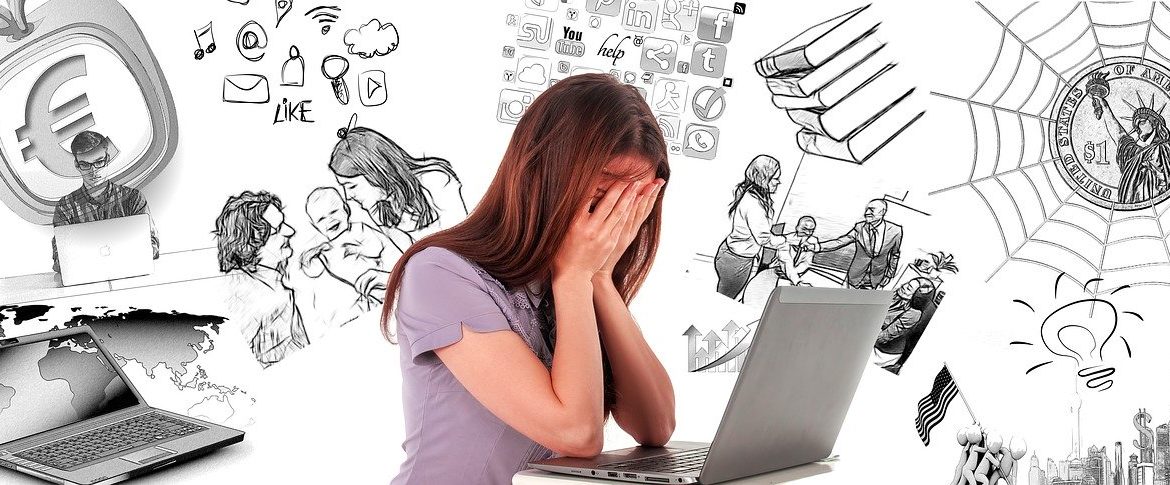Palm trees bend. This metaphor of the palm trees, which let the strong winds pass, bend and bow their heads, but recover and continue to grow after storms, thus strengthening their resistance to their trunk, is used to speak of resilience. It is a kind of general strength response to the crisis.
Initially, the word used now, both in psychology and spirituality, comes from physics to identify the quality of some materials to resist and recover from the onslaught of an external force.
A way of living the crisis
Personal resilience consists of having the ability to face the crisis, rebuild, and not lose the ability to love, fight, or resist; instead, enhance the inner resources to fight.
It is the art of not being carried away by the impact of a rough sea amid the personal storm in which we experience our threatened boat, perhaps aimlessly. The resilient person remains and achieves a new course even more exciting and consistent than before the storm. It does not allow itself to be dragged towards where the waves hit and where it seems to want to sink the boat.
The resilient person is not invulnerable, and he does not deny the crisis; he is not impassive in the face of adversity. Inside the resilient person, there is strength under the apparent weakness (the bending palm tree). Ramón y Cajal said that “the weak succumb not because they are weak, but because they ignore that they are.”
It is known how much of our suffering during the crises we experience is rooted not in what hurts us but in the way we choose to handle and live that wound.
We know, for example, that under the apparent weakness of the one who cries, the strength of the one he loves tends to hide. Or, as the great physician Sir William Osler would say, “The wound that does not find its expression in tears can cause the organs to cry.” And that is getting sick.
If our way of managing feelings in the face of the crisis influences resilient potentiality, our way of thinking also has its influence. Our mental response to adversity can be managed in a positive, optimistic way, in such a way that, from the difficulty, we come out strengthened.
Indoor cultivation
We are striving, in our days, to downplay -when not denigrate- everything that has to do with spirituality. We are trying to think that “you have to see to believe,” forgetting that it is more accurate than “you have to believe to see,” especially to see what is most important, what only the heart can see.
It is evident that the cultivation of the inner life, of the reflective capacity, of the transcendent capacity, of the reference to what is most genuinely human, of the wisdom of the heart, of the values, is the best platform to overcome the storms and emerge more vital of them.
Emotional intelligence highlights some of these elements, such as self-knowledge, emotional self-control, the ability to motivate oneself, as intrapersonal skills that can be developed, in addition to interpersonal skills.
Lao Tzu said, “knowing others is knowledge; knowing yourself is wisdom.” And so we can find within ourselves those potentialities of daydreaming without being naïve, of desiring and working for the good in the midst of what at first sight hurts us.
It is not a painful attitude that hides resilience. It is not about an attitude that praises pain itself, which would not stop being an unhealthy position in the face of adversity. Although, who knows what our ancestors meant when they used words like resignation! It is possible that in the intention of the one who piously encouraged to adopt this attitude, there was an active proposal, although today it has for us a clear connotation of passivity and defeatism.
Some dictionaries collect positive aspects such as patience and conformity in the face of adversity, without the connotation of passivity. Others also refer to conformity and patience in the face of obstacles and adversities, the variable tolerance.
Will to sense
We would say that it is instead proactivity – and not passivity – capable of indicating resilient potentiality. The proactive person takes the initiative, takes control of his own life, feels responsible even for what he cannot change; he feels free to face what paradoxically “feels like a slave.”
From the perspective of logotherapy, we would say that the willingness to seek a reason for everything that happens to us, even if we do not understand why is part of this desire to grow in crises.
This will is the opposite of indifference or apathy, which prevents us, on so many occasions, from committing ourselves to ourselves and others.
Resilience, ultimately, is the result of multiple processes that counteract harmful or crises. It is a dynamic in which some elements could be pointed out such as defense and protection of oneself, balance in the face of tension, commitment to what happens, active responsibility, commitment to self-improvement, capacity to give meaning and reorient one’s life in crisis, the positive vision in negativity, the creative capacity to react.
Nietzsche would put it like this: “what does not destroy me makes me stronger.” Dr. Gerónimo Acevedo, the author of “The human way of getting sick,” says that the verb mature can only be conjugated in a gerund. Among their expressions, we find this:
Take care of your thoughts because they will become words. Take care of your words because they will become acts. Take care of your actions because they will become customs. Watch your habits that will shape your character. Take care of your character because it will shape your destiny. And your destiny will be your life.
Perhaps this is one of the objectives of support made of helping relationships: to promote resilience in the crisis.
Adapt to the situation – make changes!
Adapting to your new situation (the loss of a job, such as the failure of a project or not finding what you are looking for) is key to being a resilient person. It is time to become aware of the situation and continue doing the tasks you did previously but in this new context. For instance:
Resilient people change the way they work or look for work (telecommuting or using new job search apps), think about doing other types of activities that you previously did not think you were going to do, change some habits that you had previously, and that has been able to make you find yourself in the current situation, etc.
Do not perceive all these changes as a delay but as a positive adaptation on your part.
The products linked here are for sale on Amazon. They include an Amazon Associates Affiliate code that gives us a small percentage of sales. The blog authors select the products, but neither Amazon nor the publishers of the books or manufacturers of the products participate in such selection.
2 Reduce Anxiety
Here is an article with ten tips on controlling anxiety, all of them well explained and summarized. Resilient people have practical strategies to reduce the anxiety generated by stressful and unpredictable situations.
tips reduce anxiety
3 Trust yourself
It is good to think about other past situations where you believed that you could not solve the problem, but finally, you did. Here the development of a secure attachment in childhood will be critical, which, if it has not been possible to develop it, can be worked through trust towards the other and esteem towards oneself.
Psychologists recommend keeping in mind memories of past events where you reached that desired goal, that you keep it in mind and try to associate it with an image or a word (for example: OF COURSE YES!).
Every time you think that you cannot get out of this, think about that memory or use that key phrase, and this will help you remember that if one day you could do it, today you can too!

